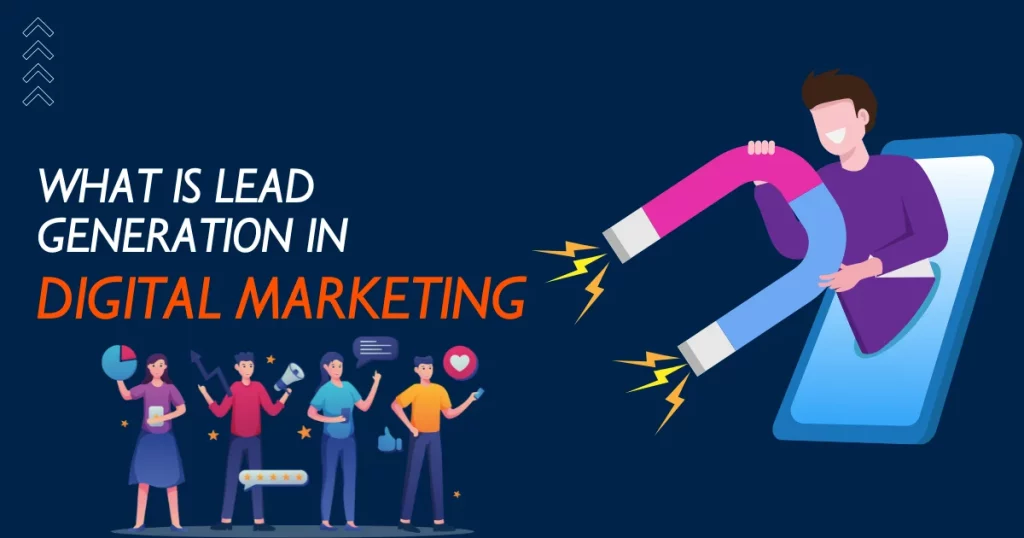Table of Contents
ToggleWhat is Lead Generation in Digital Marketing
Lead generation is a crucial aspect of the digital business world, where all the marketing strategies are driven by the internet and the advanced tools it offers. Digital marketing is the process of attracting and converting strangers and prospects into someone who has shown interest in your company’s products or services.
Earlier, leads were generated through traditional methods such as cold calling or attending trade shows, but now, the digital landscape has radically altered its approach. It has a combination of strategies, tools, and practices, including Google Ads Services and more, to attract potential customers using various channels.
The ultimate goal of lead generation is to create a pipeline of potential customers who can eventually be translated into actual sales. Through precise targeting and data-driven campaigns, Google Ads Services is critical in reaching and engaging the right audience at the right time in the digital lead generation process.
Here is everything you need to know about lead generation and the marvels it can do for business:
The Mechanics of Digital Lead Generation
The essence of lead generation in the digital realm is content. Content that educates, informs, and solves problems attracts potential leads. This content can take various forms, including blog posts, whitepapers, e-books, infographics, and videos—each piece of content addresses specific customer needs or questions at different stages of the buying journey.
Once you’ve caught your audience’s attention with compelling content, the next step involves capturing their information through a call-to-action (CTA). A CTA could be an invitation to download a free guide, sign up for a webinar, or subscribe to a newsletter. This step usually involves a landing page where prospects can leave their contact details in exchange for the valuable offer you’ve presented. Lead in digital marketing defines the success of your strategies.
The Role of SEO in Lead Generation
Search engine optimization (SEO) is fundamental for lead generation. Optimizing your content, as per updated SEO standards, increases your website’s visibility for relevant keywords. The improved visibility means your content is more likely to reach the potential leads, i.e., individuals searching for information related to your products or services. Increased lead generation examples are always backed by foolproof SEO.
SEO strategies involve both on-page optimization, such as using relevant keywords and creating high-quality content, and off-page optimization, like building backlinks from other relevant and reputable sites. These efforts improve your site’s authority and ranking on search engine results pages (SERPs), driving organic traffic to your site.
Leveraging Social Media for Lead Generation
Social media platforms facilitate the lead-generation process. Engaging with your audience through social media can increase brand awareness and drive traffic to your website. Platforms like LinkedIn, Twitter, Facebook, and Instagram allow businesses to target specific demographics with tailored content, making it easier to attract potential clients.
Paid advertising on these platforms can be a highly effective lead-generation tool. With sophisticated targeting options, businesses can reach individuals who fit their ideal customer profile, driving more qualified leads to their websites.
The Importance of Email Marketing
Email marketing remains a powerful tool in the digital marketer’s toolkit for lead generation. By nurturing leads through personalized email campaigns, businesses can keep their brand top-of-mind and encourage prospects to take the next step in the buyer’s journey.
Effective email marketing involves segmenting your audience and delivering content that resonates with their interests and needs. Personalized emails always work like a charm to attract customers.
Analytics and Lead Generation
Tracking and analyzing performance is crucial to maximizing the effectiveness of lead generation efforts. Digital marketing tools and platforms offer comprehensive analytics that allow marketers to measure their campaigns’ success and identify improvement areas. By understanding which strategies generate the most leads, businesses can allocate their resources more effectively and boost their return on investment.
Challenges and Best Practices
Although lead generation can significantly impact a business’s growth, it has specific challenges. The digital marketing landscape constantly evolves, and staying ahead requires ongoing effort and adaptation.
Moreover, generating high-quality leads likely to convert into sales demands a deep understanding of your target audience and the ability to create compelling, valuable content.
To overcome these challenges, it’s essential to:
- Keep ahead of the latest digital marketing trends and technologies.
- Continuously refine your content strategy based on performance analytics.
- Foster strong relationships with your leads through personalized communication.
- Ensure your website and landing pages are optimized for conversion.
Conclusion
Lead generation in digital marketing is a complex and multifaceted process at the heart of online business success. Businesses can attract and nurture leads by leveraging the power of SEO, social media, email marketing, and analytics, ultimately driving growth and profitability.
However, success in lead generation requires a strategic approach, a deep understanding of your audience, and the flexibility to adapt to changing digital landscapes. With these elements in place, businesses can generate leads and convert them into loyal customers, securing their place in the competitive digital marketplace.


